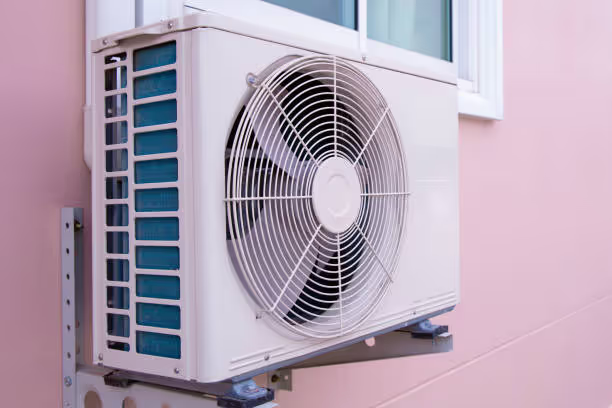AC Replacement in Babylon, NY
When your air conditioner no longer cools consistently, runs up your electric bill, or requires frequent repairs, an AC replacement is often the most cost-effective, long-term solution. In Babylon, NY, where hot, humid summers and coastal salt air put extra strain on cooling systems, choosing the right replacement system and getting it properly sized and installed makes a measurable difference in comfort, reliability, and energy costs. This page explains the AC replacement process, what to expect, and how to choose a system that fits homes in Babylon and the surrounding South Shore communities.

Why replace your AC: common indicators in Babylon, NY homes
- Age and lifespan: Most central AC systems last 10 to 15 years. If your unit is older and uses R‑22 refrigerant, replacement is generally recommended because parts and refrigerant are increasingly costly and hard to source.
- Rising repair frequency: Multiple repairs in a single cooling season signal diminishing returns. Frequent refrigerant leaks, compressor failures, or repeated component replacements are red flags.
- Poor cooling and uneven comfort: If some rooms never reach set temperature or the system runs continuously without cooling effectively, the system may be undersized or failing.
- High energy bills: Older units with lower SEER ratings can use 20–40% more electricity than modern, energy-efficient units for the same cooling output.
- Corrosion and salt exposure: Babylon’s coastal environment accelerates outdoor coil corrosion. Visible rust, leaking refrigerant lines, or significantly reduced heat transfer are reasons to replace the outdoor unit sooner.
System evaluation: how professionals assess whether to replace
A thorough evaluation includes:
- Visual inspection of the outdoor unit, evaporator coil, blower, electrical components, and ductwork.
- Performance checks: refrigerant charge, airflow, temperature split, and compressor health.
- Age and service history review.
- Estimation of future repair costs versus replacement value.
Technicians in the area will also factor in local climatic load—high humidity and heat spikes—when recommending replacements so your new system performs reliably through Long Island summers.
Proper sizing and load calculations (why it matters)
Selecting the correct capacity is critical:
- Professionals use Manual J load calculations to determine cooling needs based on square footage, insulation, window orientation, occupancy, and local humidity loads specific to Babylon homes.
- Oversized units cycle too frequently, shortening life and reducing dehumidification. Undersized units run continuously and struggle to maintain comfort.
- Ductwork evaluation (Manual D) is important in many older Long Island homes where ducts may be undersized, leaky, or poorly insulated—issues that directly impact system performance.
Choosing an energy-efficient model
- Look for higher SEER ratings: modern systems commonly range from 15 to 26 SEER. Moving from a 10–12 SEER to a 16+ SEER unit typically reduces cooling energy use by 20–35%, though exact savings depend on usage patterns and electricity rates.
- Consider variable-speed compressors and multi-stage systems for better humidity control and more consistent comfort in humid Babylon summers.
- For coastal exposure, choose units with corrosion-resistant coatings on outdoor coils and hardware rated for salt-air environments.
- Evaluate refrigerant type: newer models use R-410A or lower-global-warming-potential refrigerants; avoid older R-22 systems when replacing.
Removal and disposal of old equipment
- Refrigerant recovery: EPA-compliant recovery of existing refrigerant is mandatory. Technicians will evacuate and recycle or dispose of refrigerant per regulations.
- Proper disposal: Old outdoor and indoor equipment, oil, and other components are removed and recycled or disposed of at approved facilities. Documentation is typically provided for rebate or tax reporting.
- Ductwork and indoor air considerations: damaged or contaminated ducts may be cleaned, sealed, or replaced as part of the replacement scope.
Typical installation steps and expected timelines
- Pre-installation assessment and load calculation (same-day or scheduled visit).
- Equipment selection and order (equipment availability can affect timing; standard lead times range from a few days to several weeks).
- Site preparation: pad or platform adjustments, electrical service upgrades, or minor sheet metal work (1 day).
- Removal of old system and installation of new outdoor unit, indoor coil/air handler, refrigerant lines, and thermostat (typical split-system installs take 1–2 days for standard single-family homes).
- System start-up, refrigerant charge, airflow balancing, and performance verification (same day as installation).
- Final walkthrough and documentation: warranties, manufacturer registration, and rebate paperwork.
Complex jobs such as replacing packaged units, major ductwork modifications, or electrical panel upgrades can extend timelines.
Warranties, financing options, and rebate assistance
- Warranties: Many new systems include manufacturer warranties on parts and compressors commonly ranging from 5 to 10 years; some components may require registration to qualify. Extended labor warranties or service agreements are often available for added protection.
- Financing options: Interest-free or low-interest financing plans are frequently offered to spread replacement costs. Options vary by provider and credit eligibility.
- Rebate assistance: Local utility programs, state incentives, and federal tax credits or rebates can reduce out-of-pocket costs—especially for high-efficiency equipment and heat pump installations. In some regional programs, heat pump rebates may be eligible up to $1,000 per ton. Professional installers often assist with paperwork and submission to ensure you receive available incentives.
Long-term energy savings and what to expect
- Savings depend on current equipment efficiency, home envelope, thermostat settings, and local electricity rates. Replacing an older 10–12 SEER system with a 16–20 SEER unit commonly yields estimated energy savings of 20–35% on cooling costs.
- Example ranges: for a typical Babylon household, annual cooling savings might be roughly $200–$600, depending on usage and SEER improvement. Homes with poor duct sealing or high cooling loads will see different results.
- Additional benefits: improved humidity control, quieter operation, more consistent temperatures, and fewer repairs—factors that contribute to better comfort and reduced total cost of ownership.
Long-term care and maintenance recommendations
- Schedule annual tune-ups before peak summer: clean coils, check refrigerant, calibrate thermostats, and inspect electrical components.
- Replace or clean filters regularly to maintain airflow and indoor air quality.
- Seal and insulate ducts where accessible to preserve efficiency especially valuable in older Long Island homes.
- Consider smart thermostat integration to optimize runtime and reduce energy use during peak summer periods.
Replacing your AC in Babylon, NY is a significant investment that pays off through increased comfort, lower energy bills, and fewer emergency repairs—especially when the system is sized correctly, installed to code, and matched to the coastal local conditions. Detailed load calculations, attention to corrosion-resistant materials, proper refrigerant handling, and leveraging available warranties and rebates ensure the replacement delivers reliable performance for years to come.
Customer Testimonials
Hear directly from homeowners who trust Bobby O’s HVAC Inc. for fast response times, honest service, and lasting comfort.











